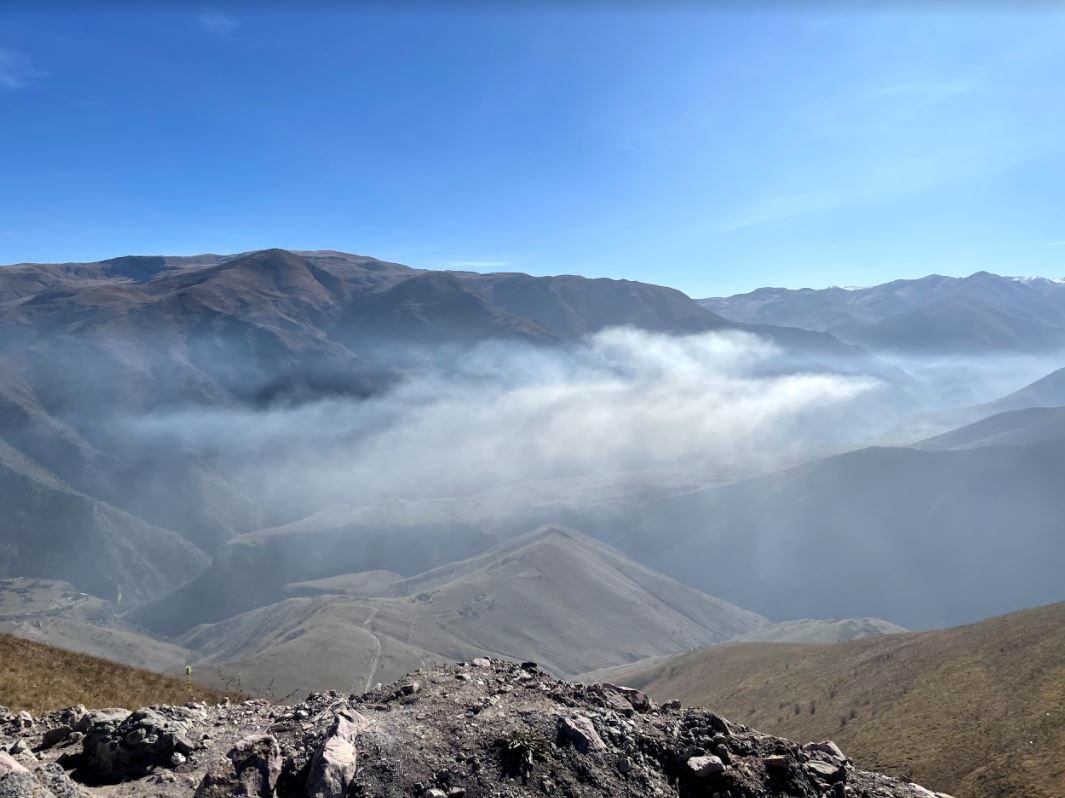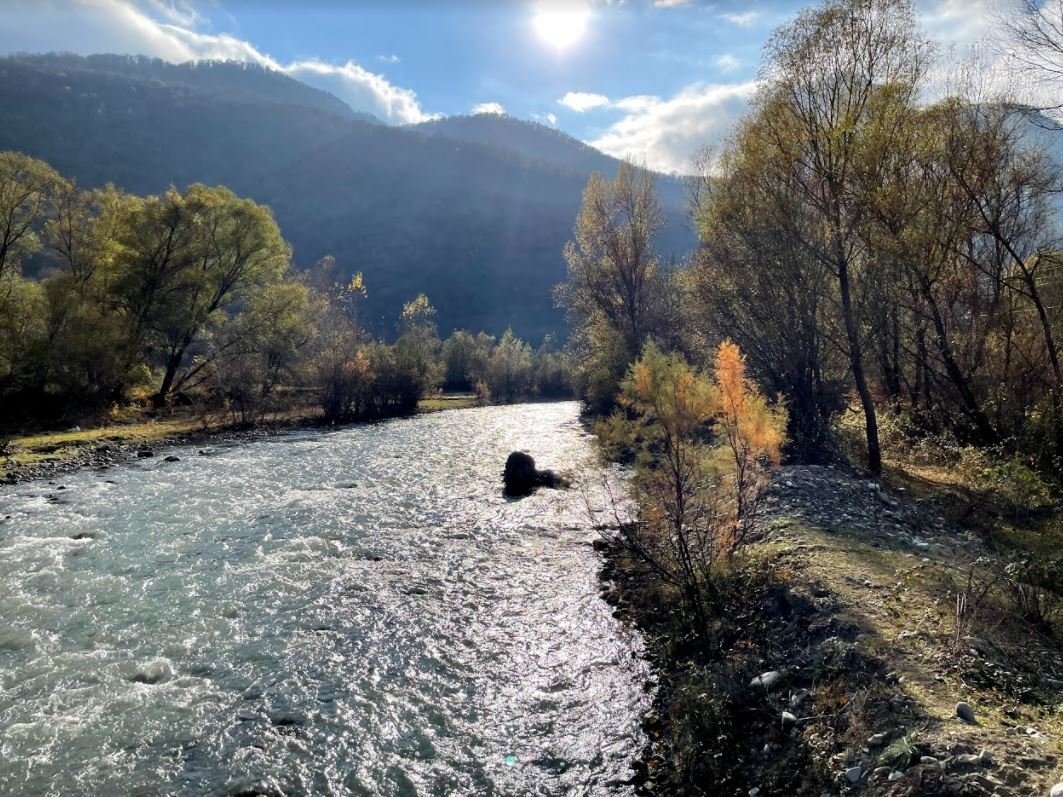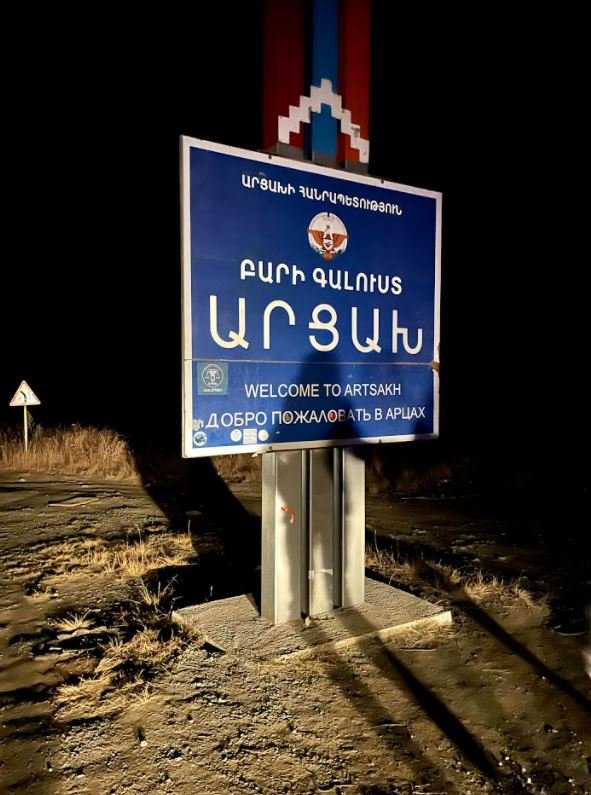
KARVACHAR, Artsakh (November 14, 2020)—This was supposed to be the day before the Armenian side was to hand over the region of Karvachar to Azerbaijan according to the deal signed by Prime Minister Nikol Pashinyan in the early hours of November 10. At this point, it had been a few weeks since I was in Armenia working on various humanitarian initiatives and was certain that I had to make it to Dadivank.
With the terms of the agreement loosely defined and the future of the region unclear, I decided to rent a car and drive to Dadivank and through the region of Karvachar for the day.
As we hit the road and approached the border using the Vardenis-Martakert highway, we were stopped by Armenian forces who had blocked the road and made it only available for traffic coming into the Republic of Armenia. Instead, they directed us to use another route which was mainly a dirt road that took us through several villages in the Karvachar region including Nor Verinshen and Nor Prachur, among others.
Smoke enveloped the mountains as locals were burning their homes so they would no longer be utilized by Azerbaijanis. Homeowners were also dismantling their properties of doors, windows and roof shingles for future use. They were also cutting trees to take to Armenia. We witnessed abandoned schools and misguided animals roaming freely. Residents in the region told us they were unsure of what the future held for them.
After a two-hour delay through this detour, we arrived at the ninth century historic Armenian monastery of Dadivank. Many were present on this somber day to witness Dadivank one more time before it was handed to the Azerbaijanis, as we were under the impression of it being so.

Russian peacekeepers were already at Dadivank; it was later announced the same day by the Holy See of Etchmiadzin that the monastery was going to be under their protection.
At Dadivank, we noticed people working on scanning the monastery to create a 3D depiction to be available online. Armenian soldiers were also on-site talking to many of the visitors, taking photos and telling war stories.
Following our pilgrimage to Dadivank, we continued our journey on the Vardenis-Martakert highway knowing there may be some tombstones, khachkars or other monuments on the way. We soaked in the breathtaking landscape between the steep mountains alongside the peaceful running waters. Unfortunately, some of the tombstones on the way were already removed or were in the process of getting removed.

On our way back to Armenia, we were instructed to take the same detour back to the border of Armenia and Artsakh. However, in the middle of the village of Karvachar, our car came to a complete stop. Traffic continued for miles because the dirt road became too narrow at one point. Traffic to Armenia was halted since busloads of citizens were being brought back to Artsakh from Armenia. Our car was at a standstill for about four to five hours. Busloads from Armenia were coming into Artsakh and being taken back to Stepanakert as the Prime Minister had announced would be happening.
This traffic jam made the horrific scene more apparent and unfortunately unforgettable because we had no choice but to watch Armenian-owned houses burn to the ground. We also witnessed cars packed with families’ belongings headed in both directions to Armenia and Artsakh. It was later announced that the deadline to vacate the area would be extended to November 25.
A trip to Artsakh is obligatory every time anyone visits Armenia, but this time, it was a different, haunting experience. It felt like everyone was mourning a sacred loss that was their gain less than 30 years ago.



In this invasion not only Pashinyan (who is getting his orders from Kremlin) is a TREATER and needs to RESIGN NOW, for hand it over part of Historical Armenia to Turks (Pashinyan will end up in the black pages of our thousand year old history) but, Also Russia’s Putin, who from day one could have brought his peace keeping troops and protected us from this massacre, if he really was interested having his power and place in this Caucasus region. It is crystal clear that this plane was orchestrated by two main autocratic dictators; Russia’s Putin, Turkish Erdogan and both of them are threatening Armenian people not to interfer or else the worse will come, worse then what or worse than this one may ask, so another GENOCIDE is planed for us?? We need to tell the whole world that the Armenian’s around the world want what is our right the Historical Home land; Western Armenia, Nakhyjavan, and every inch of Artsakh to be added to the current Republic of Armenia. We, 90 percent of Diaspora Armenians are the desendants of those who survived the last Genocide and we are tyried of moving around one continent to the next continent, we want to live on our Historical ancestrial home land.
The irony is that your comment will probably get a reply from a Russophile Armenians saying that Russia ‘saved’ Armenia or that Armenia could not survive without Russian ‘support’. It’s time to call a spade a spade and say that Russians hate us
Heartbreaking.
Sorry for the Azerbaijanis who were driven out of their land 30 years ago and sorry for the Armenians who were driven or being driven out of their land>It seems both people belong to the same land. There are more Armenians than Azerbaijanis. However it is sad .What is happening to these people reminds me of what happened to the Palestinians in 1948.They are still live in refugee camps. And their land is taken from them by the Jews from Europe. I wish the Armenians and the Azerbaijanis could live together as good neibours in the same beautiful land.
One future day, promised by God in the Bible, the suffering will all be over. Precious Jesus gave His wonderful promise, “In My Father’s house are many rooms; if it were not so, I would have told you. I go to prepare a place for you.”